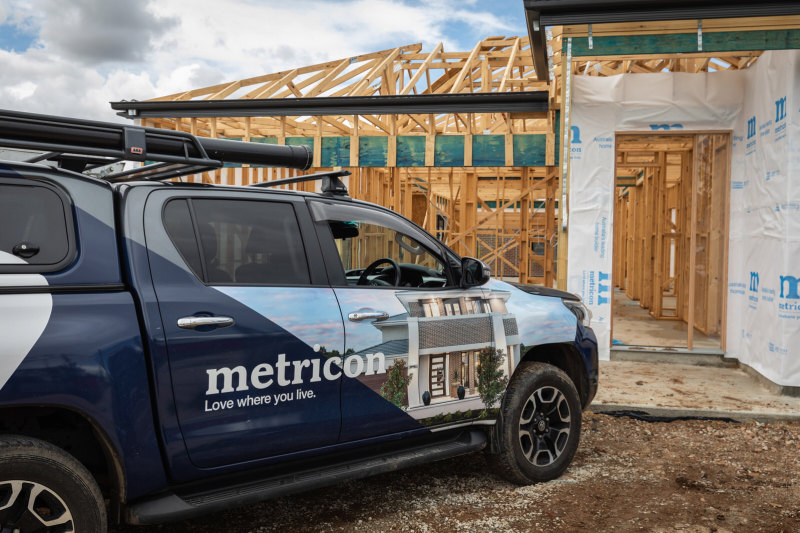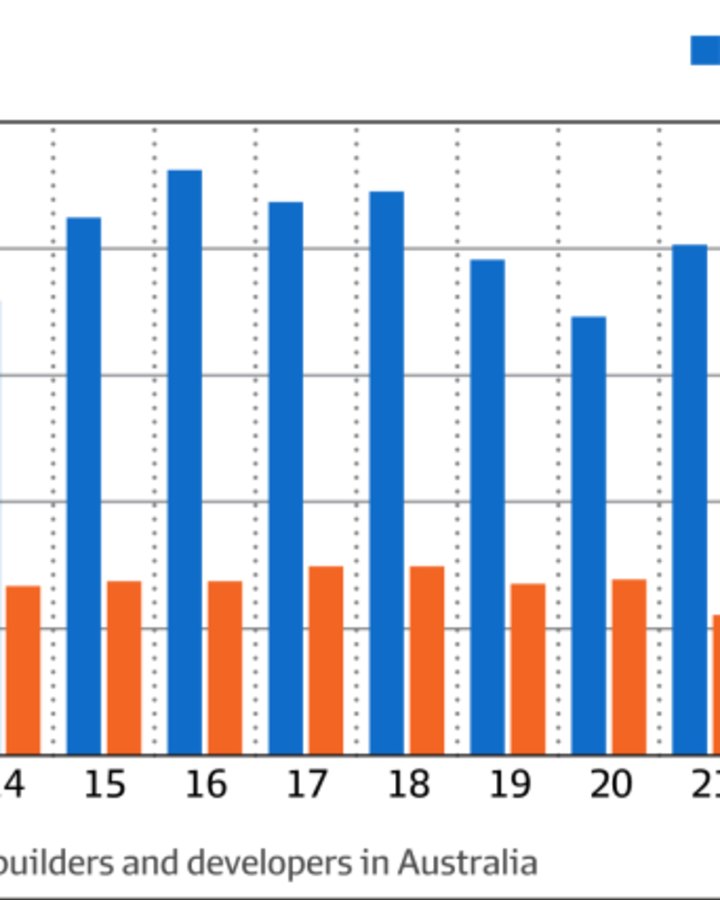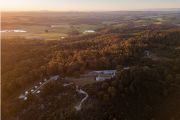
Country’s biggest builder warns on housing slowdown
Metricon, the country’s largest home builder for the ninth year running, has warned that without cuts to red tape and access to more tradies, the country will fall behind on delivering much-needed housing.
Chief executive Brad Duggan also issued a sweeping warning against fiddling with investor settings – including for negative gearing and capital gains tax – just as the debate on that heats up again.

Metricon, which focuses on detached housing, was ranked first in the Housing Industry Association’s top 100 builders for 2023/24, with 3,894 new homes started, ahead of Western Australia’s ABN Group and Rich Lister Harry Triguboff’s Meriton Apartments.
“While we are proud of Metricon’s achievements last year, we note that to be the largest builder in Australia with under 4000 site starts it’s clear that the country is falling behind on delivering the homes that have been identified as essential,” Mr Duggan said.
“We need to accelerate momentum in the industry. It’s time to move beyond the sole focus on social housing and tackle the bigger picture: cutting planning red tape, increasing access to land, growing the country’s trade base, scrapping discussions on tax changes impacting investors and superannuation funds, and crucially, addressing the cost-of-living crisis.
“These are the real levers to restore customer confidence and get people building again.”
Metricon’s starts have been steadily falling since peaking above 6000 in the 2020-21 year – when the HomeBuilder program was in full swing – but were previously already comfortably above the 4000 threshold in the years preceding the peak.

Mr Duggan’s comments come as the national debate over how to solve the housing crisis intensifies. On Wednesday, Prime Minister Anthony Albanese confirmed Treasury is looking at options to curb the use of negative gearing and the capital gains tax deduction for investors.
Housing supply is already under pressure with annual starts running at around 160,000, falling well behind the 240,000 each year that would be need to hit the federal government’s target of 1.2 million new homes over th next five years.
High costs and a lack of tradies – a focus for federal housing minister Clare O’Neil – have added to headwinds in the sector. The latest evidence of the construction slump came this week from supplier Fletcher Building, which said it expected sales volumes to slide by up to 15 per cent.
However, Tim Reardon, the HIA’s chief economist, took some heart from the lobby group’s annual tally of top builders which, he said, showed there was some confidence returning to the market as interest rates remained on hold.
“Increasingly the outlook for home building is dominated by local factors such as the price of land and state government taxes. For this reason, a recovery in building activity in NSW appears set to lag all other jurisdictions,” he said.
But Queensland, Western Australia and South Australia were more likely to experience an increase in building activity, he said.
“Population growth through the pandemic and then a return of overseas migration have seen a stabilisation of building levels in 2023/24 similar to that seen immediately prior to the pandemic. This bodes well for a more stable return to building activity in future years.”











